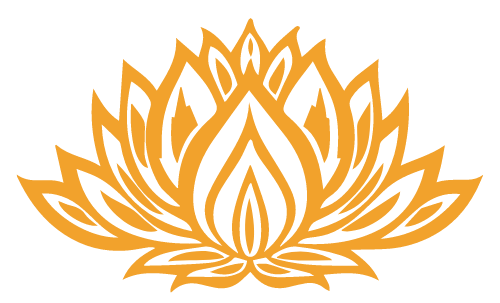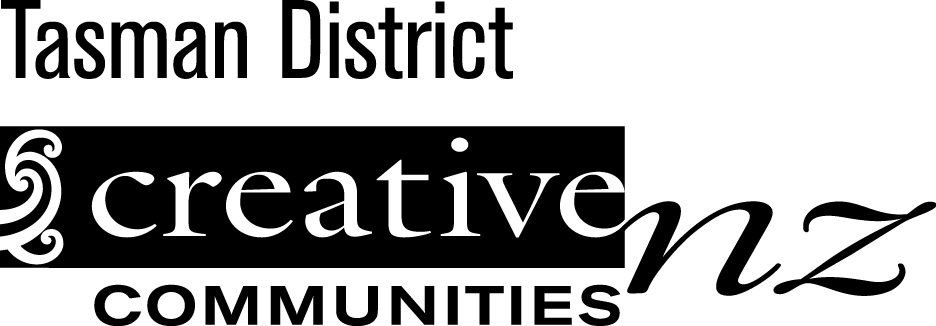DEATHWALKER'S GUIDE TO LIFE
EPISODE 5
How death finds its expression in Art
Pictured above: Photo of Waka (canoe) figure head by Bernard Spragg (Creative Commons)
november 14, 2021
EPISODE 5
How death finds its expression in Art
Death in Print: H is for Hawk by Helen Macdonald, Meet: Poet & playwright Donna McLeod, Death on Screen: 'Living with Ghosts'
Listen to Episode 5 on the following podcast platforms
Or, if you've already listened to the show, scroll down for more info and links . . .
DEATH IN PRINT
H is for Hawk by Helen Macdonald




Helen Macdonald was, from a young age, determined to become a falconer, learning the arcane terminology and reading all the classic books. Years later, when her father died and she was struck deeply by grief, she became obsessed with the idea of training her own goshawk. She bought Mabel for £800 on a Scottish quayside and took her home to Cambridge, ready to embark on the long, strange business of trying to train this wildest of animals.
Here in Aotearoa NZ, H is for Hawk is published by Penguin Books, which describes the memoir as an unflinchingly honest account of Helen Macdonald's struggle with grief during the difficult process of the hawk's taming and her own 'untaming'. This is a book about memory, nature and nation, and how it might be possible to reconcile death with life and love.
Reading H is for a Hawk had a profound impact on the way I think about writing and storytelling but also how I have moved through my own grieving process. When I began reading it, I found myself bathed in melancholy, because I couldn’t help but compare myself to Helen and judge myself harshly. I questioned what I was doing attempting to write something about the Brahminy Kite when I had zero expertise in any aspect of ornithology, other than being able to admire them soaring in the sky above me. And, in comparison to Helen’s experience, my retreat from the world after Steve died felt so inane. Then I realised my relationship with these eagles was all about the metaphorical significance – as remote, unattainable soarers – rather than my intimate relationship with them. And that my retreat from the world gave me the fortitude to start construction, of both my new self and my new life. Once I let go of this self-judgments, I found myself completely absorbed in her story.
I loved the world Helen creates and how honest she is about her place in it:
It was about this time a kind of madness drifted in. Looking back, I think I was never truly mad. More mad north-north-west. … I knew I wasn’t mad mad because I’d seen people in the grip of psychosis before, and that was madness as obvious as the taste of blood in the month. The kind of madness I had was different. It was quiet, and very, very dangerous. It was a madness designed to keep me sane.
At first, the summaries and analyses of TH White’s 1951 study, The Goshawk, one of the classic books Helen had first read as a child, annoyed me. Yet, although White never really comes across as a likeable character, I grew to enjoy the digressions as much as main story. As he provided Helen with the inspiration to love raptors, I appreciated it when she wrote, “I have to write about him, because he was there.” And then his world became as vivid as Helen’s did, with observations about the importance of place, like this:
The mirror works both ways. The lines between the man and the landscape blur. When White writes of his love for the countryside, at heart his is writing about a hope that he might be able to love himself.
And, on the multiplicity of selves we carry with us, she writes:
But what I should have realised, too, on those northern roads, is that what the mind does after losing one’s father isn’t just to pick a new father from the world, but pick new selves to love them back with.
The only aspect of the story that I thought could have been clearer was the timeframe but perhaps that’s just my own confusion. I found it difficult to calculate how much time had elapsed between Helen's father’s death and his memorial, or over the duration of the book (my best guess is about nine months) and as someone who paid great attention to the passing of time in the year that followed Steve’s death, I wanted to know.
Here in Aotearoa NZ, H is for Hawk is published by Penguin Books, which describes the memoir as an unflinchingly honest account of Helen Macdonald's struggle with grief during the difficult process of the hawk's taming and her own 'untaming'. This is a book about memory, nature and nation, and how it might be possible to reconcile death with life and love.
Reading H is for a Hawk had a profound impact on the way I think about writing and storytelling but also how I have moved through my own grieving process. When I began reading it, I found myself bathed in melancholy, because I couldn’t help but compare myself to Helen and judge myself harshly. I questioned what I was doing attempting to write something about the Brahminy Kite when I had zero expertise in any aspect of ornithology, other than being able to admire them soaring in the sky above me. And, in comparison to Helen’s experience, my retreat from the world after Steve died felt so inane. Then I realised my relationship with these eagles was all about the metaphorical significance – as remote, unattainable soarers – rather than my intimate relationship with them. And that my retreat from the world gave me the fortitude to start construction, of both my new self and my new life. Once I let go of this self-judgments, I found myself completely absorbed in her story.
I loved the world Helen creates and how honest she is about her place in it:
It was about this time a kind of madness drifted in. Looking back, I think I was never truly mad. More mad north-north-west. … I knew I wasn’t mad mad because I’d seen people in the grip of psychosis before, and that was madness as obvious as the taste of blood in the month. The kind of madness I had was different. It was quiet, and very, very dangerous. It was a madness designed to keep me sane.
At first, the summaries and analyses of TH White’s 1951 study, The Goshawk, one of the classic books Helen had first read as a child, annoyed me. Yet, although White never really comes across as a likeable character, I grew to enjoy the digressions as much as main story. As he provided Helen with the inspiration to love raptors, I appreciated it when she wrote, “I have to write about him, because he was there.” And then his world became as vivid as Helen’s did, with observations about the importance of place, like this:
The mirror works both ways. The lines between the man and the landscape blur. When White writes of his love for the countryside, at heart his is writing about a hope that he might be able to love himself.
And, on the multiplicity of selves we carry with us, she writes:
But what I should have realised, too, on those northern roads, is that what the mind does after losing one’s father isn’t just to pick a new father from the world, but pick new selves to love them back with.
The only aspect of the story that I thought could have been clearer was the timeframe but perhaps that’s just my own confusion. I found it difficult to calculate how much time had elapsed between Helen's father’s death and his memorial, or over the duration of the book (my best guess is about nine months) and as someone who paid great attention to the passing of time in the year that followed Steve’s death, I wanted to know.
FOR MORE INFORMATION ABOUT HELEN MACDONALD
Find out more about and buy Helen Macdonald's books.
Helen Macdonald's official Facebook page.
Find out more about and buy Helen Macdonald's books.
Helen Macdonald's official Facebook page.
KŌRERO / CONVERSATION
Meet Donna McLeod

In episode 5, you can listen to my kōrero with Donna McLeod (Te Āti Awa) about her own experiences of loss and bereavement and Māori tikanga around death and dying.
Donna is a writer, poet and playwright who lives in Motueka with her husband Paul Bennett – where she is mana whenua - surrounded by whānau on McLeod Bennett papakaiinga (communal housing) in the rohe (district) of Te Āti Awa and Ngāti Rārua and Te Āwhina Marae.
She cut her theatre teeth by being part of Te Ohu Whakaari Māori theatre group and is one of the founders of Te Ora Hā, which has recently staged two theatre shows:
Donna is a writer, poet and playwright who lives in Motueka with her husband Paul Bennett – where she is mana whenua - surrounded by whānau on McLeod Bennett papakaiinga (communal housing) in the rohe (district) of Te Āti Awa and Ngāti Rārua and Te Āwhina Marae.
She cut her theatre teeth by being part of Te Ohu Whakaari Māori theatre group and is one of the founders of Te Ora Hā, which has recently staged two theatre shows:
- Parihaka at the Theatre Royal on November 5, 2020
- Unveiling at the Motueka Memorial Hall on July 23 and 24, 2021
DEATH ON SCREEN
'Living with Ghosts'
In episode 5, I introduce a new documentary, titled Living With Ghosts: Science Weighs in on the Healing Power of After-Death Communication.
In this seven-time award-winning documentary, a widow who is suffering prolonged grief agrees to participate in a research study exploring a clinical intervention that aims to reconnect bereaved survivors with their departed loved ones. The process is known as Induced After-Death Communication (IADC), and according to the filmmakers it is rapidly gaining recognition among psychologists, academics and bereavement professionals.
The widow, Karen, was one of 162 chronically-bereaved people who volunteered for the IADC study – the first publicly-funded research of its kind.
Like about a third of the 270 million bereaved people in the world, Karen is diagnosed with a disorder called Complicated Grief, a debilitating condition that can last for years or even a lifetime. In her case, she has been stuck in an emotional holding pattern for 17 years since the sudden death of her husband Kevin. Her two daughters, who were quite young when their father died and are now adult women, urge her to take part in the study.
The filmmakers note that researchers have known for decades that survivors do better when an emotional bond is maintained with the deceased. And yet many psychologists, grief counsellors, and clergy routinely discourage such behaviour as ‘denial’ or even ‘heresy’. The film features a rabbi explaining the Judaism is very much a ‘this world’ religion. You die and, you’re . . . well . . . dead (although the Kabbalah, ancient Jewish mysticism, has different things to say).
The narrator also paraphrases the words of Catholic priests who have pretty much said, ‘If there’s any spirit, it better be The Holy Spirit, otherwise it’s Spiritualism and that’s heretical.’
This doco looks at why these all of these schools of thought need a re-think and how doing so just might equip people living in WEIRD (Western, Educated, Industrialised, Rich and Democratic) societies around the world to allow grief to happen. As grief therapist Graham Maxey says in the film, ‘It’s not up for debate any more – you need to feel the feelings, you can’t just put them away.’
One of my favourite quotes in the film is this: ‘Irrational consolation and joy can lead to good health – why forbid that? That’s crazy.’
Apparently there’s something about love that enables clairvoyant abilities. The filmmakers present the findings of a research study that 82% of widows and widowers experienced a visit from a dead spouse.
Like the 2004 doco What the Bleep, Living with Ghosts rolls out a lot of quantum physicists and other well-known bestselling authors in this field like Joe Dispenza and Bruce Greyson. On the skeptics' side, Richard Dawkins makes a small and ignominious appearance and psychiatrist Roger Samuel chips away at trying to understand why some people think they can communicate with their dead – perhaps they have been a drinker or drug user in the past, he asks earnestly.
Whether or not this doco will be discounted, like What the Bleep, as pseudo-science or be recognised as a groundbreaking film on the cutting edge has yet to be determined, but it’s pretty bloody convincing if you ask me. While the Induced After-Death Communication (IADC) process is listed on a number of skeptic sites, including Skeptic Ink, the film clearly shows how much it benefitted Karen (even if she doesn't believe she's been able to communicate directly with her late husband) and helped her re-engage with life.
In this seven-time award-winning documentary, a widow who is suffering prolonged grief agrees to participate in a research study exploring a clinical intervention that aims to reconnect bereaved survivors with their departed loved ones. The process is known as Induced After-Death Communication (IADC), and according to the filmmakers it is rapidly gaining recognition among psychologists, academics and bereavement professionals.
The widow, Karen, was one of 162 chronically-bereaved people who volunteered for the IADC study – the first publicly-funded research of its kind.
Like about a third of the 270 million bereaved people in the world, Karen is diagnosed with a disorder called Complicated Grief, a debilitating condition that can last for years or even a lifetime. In her case, she has been stuck in an emotional holding pattern for 17 years since the sudden death of her husband Kevin. Her two daughters, who were quite young when their father died and are now adult women, urge her to take part in the study.
The filmmakers note that researchers have known for decades that survivors do better when an emotional bond is maintained with the deceased. And yet many psychologists, grief counsellors, and clergy routinely discourage such behaviour as ‘denial’ or even ‘heresy’. The film features a rabbi explaining the Judaism is very much a ‘this world’ religion. You die and, you’re . . . well . . . dead (although the Kabbalah, ancient Jewish mysticism, has different things to say).
The narrator also paraphrases the words of Catholic priests who have pretty much said, ‘If there’s any spirit, it better be The Holy Spirit, otherwise it’s Spiritualism and that’s heretical.’
This doco looks at why these all of these schools of thought need a re-think and how doing so just might equip people living in WEIRD (Western, Educated, Industrialised, Rich and Democratic) societies around the world to allow grief to happen. As grief therapist Graham Maxey says in the film, ‘It’s not up for debate any more – you need to feel the feelings, you can’t just put them away.’
One of my favourite quotes in the film is this: ‘Irrational consolation and joy can lead to good health – why forbid that? That’s crazy.’
Apparently there’s something about love that enables clairvoyant abilities. The filmmakers present the findings of a research study that 82% of widows and widowers experienced a visit from a dead spouse.
Like the 2004 doco What the Bleep, Living with Ghosts rolls out a lot of quantum physicists and other well-known bestselling authors in this field like Joe Dispenza and Bruce Greyson. On the skeptics' side, Richard Dawkins makes a small and ignominious appearance and psychiatrist Roger Samuel chips away at trying to understand why some people think they can communicate with their dead – perhaps they have been a drinker or drug user in the past, he asks earnestly.
Whether or not this doco will be discounted, like What the Bleep, as pseudo-science or be recognised as a groundbreaking film on the cutting edge has yet to be determined, but it’s pretty bloody convincing if you ask me. While the Induced After-Death Communication (IADC) process is listed on a number of skeptic sites, including Skeptic Ink, the film clearly shows how much it benefitted Karen (even if she doesn't believe she's been able to communicate directly with her late husband) and helped her re-engage with life.
Coming up
OUT NOVEMBER 28, 2021
EPISODE 6
Death in Print: Mortals: How the Fear of Death Shaped Human Society by Rachel & Ross Menzies, Meet: psychologist and author Rachel Menzies, Death on Screen: Lisel Mueller on 'The Marginalian'
OUT DECEMBER 12, 2021
EPISODE 7
Death in Print: No One is Talking About This by Patricia Lockwood, Meet: author Bonnie Etherington, Death on Screen: 'My Beautiful Broken Brain'







